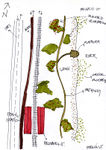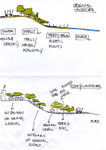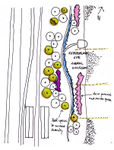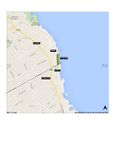Planting Design 2013 Working Group 19 - Case Study C
---> back to group page working group 19
Martinez Rio de la Plata Coast
| Name | Martinez Rio de la Plata Coast | |
| Location | Martínez, Buenos Aires | |
| Country | Argentina | |
| Authors | Valeria Micou | |

| ||
|
| ||
Rationale: Why is this case interesting?
"This public park is part of the Northern Rio de la Plata coast. It´s landscape design tries to recreate the natural landscape that once existed and now has almost disappeared. Species planted are native, but I believe, in a few number and type. As this place is used by many people, I think it could be a perfect educational spot, where recreation and education would meet."
Author's perspective
I´m a landscape architect, and I also live very close to this place. Taking into consideration the fact that there are just a few public spaces , this park works perfectly. It´s used by many people, specially during weekends. Besides I´m interested in ecosystems restoration, so I think this could be a good place to practice this kind of projects. I think public spaces are good for research, because it could be a way of making people get involved with environment and could help to educate about landscape dynamics related to floodings.
Landscape and/or urban context of your case
- Biogeography, cultural features, overall character, history and dynamics
This public park, situated by Rio de la Plata Coast is used by people becoming from the neighbourghood surroundings and from Buenos Aires city and suburbs. It is part of a park system that begins in the north of Buenos Aires City and ends in San Isidro completing around 10km. People usually run or ride bycicles and uses this parks as an stop for doing some excersice or having a snak. On weekends, specially those during spring and summer (from september to april), the park is very crowded and cheerful. This park, as the other many coastal parks in Buenos Aires, was built over where the river originally stood, so soil and vegetation are not part of the natural and original river ecosystem. In this case, river dynamic is very important. Its rices depend basically on which winds are blowing. On one hand, Sudestada occurs in spring and it comes from South East wich alows river to rice and it ussually leads a flooding. On the other hand, Pampero occurs in summer and autumn and runs from the West, it makes the coast look very wide and out of water.
- Plan
Analytical drawings
- Analytical Drawings
Projective drawings
- Please add four projective sketches/drawings (or montages/schemes) for your case and take the following aspects into account:
- How would you like this case to change in the near future? (in 1-2 years)
- And how could it look like in 10-15 years?
- Projective Drawings
- Yourfilename4.jpg
projective drawing 4
Summary and conclusion
This park is situated at the north of Buenos Aires, by Río de la Plata coast in Argentina. It was designed and constructed about a decade ago. In orden to prevent recurrent floods and later muddy coast, soil was added to increase land level. So the park was design and constructed from scratch and natural landscape was lost. As a public park is very used specially during weekends. Many people go to excersise or have a day in the open space.
River dynamic wasn´t controlled, so floods may occur eventually. I believe this is a great opportunity to explore ecological succession and to try to recreate the original landscape and increase diversity. This could be used as an educational park, where people could learn about nature and landscape. That´s why some places were left for experimental purposes and native trees, shrubs and perennials were added to the present design.
Image Gallery
You may add a series of images/photos in addition to the sketches/drawings
- Image Gallery
- Yourfilename4.jpg
image 4
References
http://en.wikipedia.org/wiki/R%C3%ADo_de_la_Plata
http://en.wikipedia.org/wiki/Floodplain_restoration
http://en.wikipedia.org/wiki/Ecological_restoration
About categories: You can add more categories with this tag: "", add your categories








